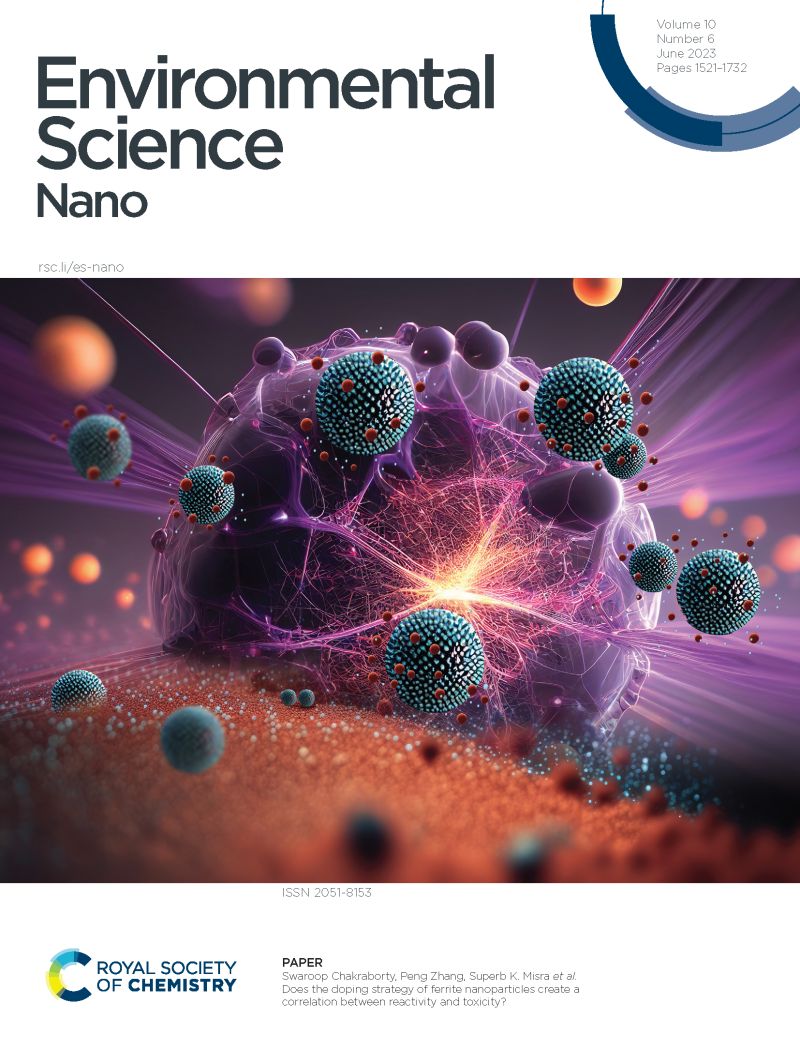Eco-friendly Nanobioengineered CuO Platform mediated through Ficus religiosa Latex for Malathion Detection
IF 5.1
2区 环境科学与生态学
Q1 CHEMISTRY, MULTIDISCIPLINARY
引用次数: 0
Abstract
Nanobioengineered platforms are increasingly recognized for their unique properties and high surface area-to-volume ratio, making them ideal for sensitive and selective biosensing applications. This study presents the synthesis and utilization of biogenic copper oxide nanoparticles (CuO NPs) for fabricating a biosensor for malathion sensing. The synthesized CuO NPs were initially characterized to confirm their structure and stability. Subsequently, CuO NPs were electrodeposited on the substrate via electrophoretic deposition and immobilized with Choline Oxidase (ChO) enzyme to fabricate ChO-CuO NPs/ITO nanobioengineered electrodes. This platform demonstrated high selectivity and sensitivity for detecting the organophosphate pesticide malathion, showcasing a notable electro-oxidation response. In comparison to existing malathion biosensors, this platform offers a novel combination of high selectivity and enhanced sensitivity, providing a significantly lower detection limit of 0.41 μM. The sensor displayed a sensitivity of 159.2 μA μM-1cm-2 across a linear range of 1–200 μM, indicating its potential application for rapid, selective, and quantitative malathion detection in environmental and agricultural samples. Thus, this work paves the way for future advancements in eco-friendly, low-cost biosensors for the detection of harmful pesticides, with potential applications in environmental monitoring and food safety.以无花果胶乳为媒介的环保纳米CuO检测平台
纳米生物工程平台因其独特的性能和高表面积体积比而越来越受到认可,使其成为敏感和选择性生物传感应用的理想选择。本研究介绍了生物氧化铜纳米颗粒的合成和利用,用于制造马拉硫磷传感生物传感器。对合成的CuO NPs进行了初步表征,以确定其结构和稳定性。随后,通过电泳沉积将CuO NPs电沉积在底物上,并用胆碱氧化酶(ChO)酶固定化制备ChO-CuO NPs/ITO纳米生物工程电极。该平台对有机磷农药马拉硫磷的检测具有很高的选择性和灵敏度,并表现出显著的电氧化响应。与现有的马拉硫磷生物传感器相比,该平台提供了高选择性和增强灵敏度的新组合,提供了0.41 μM的显着低检测限。该传感器在1 ~ 200 μM线性范围内的灵敏度为159.2 μA μM-1cm-2,可用于环境和农业样品中马拉硫磷的快速、选择性和定量检测。因此,这项工作为用于检测有害农药的生态友好、低成本生物传感器的未来发展铺平了道路,在环境监测和食品安全方面具有潜在的应用前景。
本文章由计算机程序翻译,如有差异,请以英文原文为准。
求助全文
约1分钟内获得全文
求助全文
来源期刊

Environmental Science: Nano
CHEMISTRY, MULTIDISCIPLINARY-ENVIRONMENTAL SCIENCES
CiteScore
12.20
自引率
5.50%
发文量
290
审稿时长
2.1 months
期刊介绍:
Environmental Science: Nano serves as a comprehensive and high-impact peer-reviewed source of information on the design and demonstration of engineered nanomaterials for environment-based applications. It also covers the interactions between engineered, natural, and incidental nanomaterials with biological and environmental systems. This scope includes, but is not limited to, the following topic areas:
Novel nanomaterial-based applications for water, air, soil, food, and energy sustainability
Nanomaterial interactions with biological systems and nanotoxicology
Environmental fate, reactivity, and transformations of nanoscale materials
Nanoscale processes in the environment
Sustainable nanotechnology including rational nanomaterial design, life cycle assessment, risk/benefit analysis
 求助内容:
求助内容: 应助结果提醒方式:
应助结果提醒方式:


